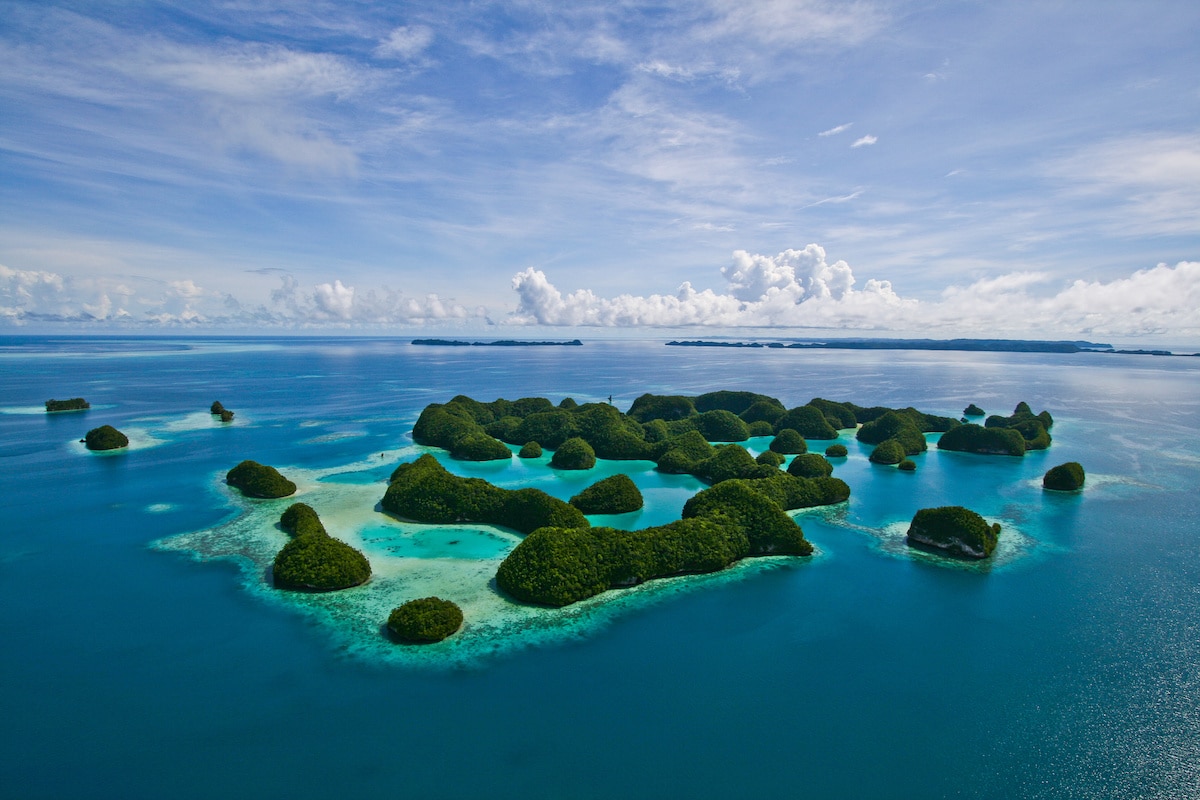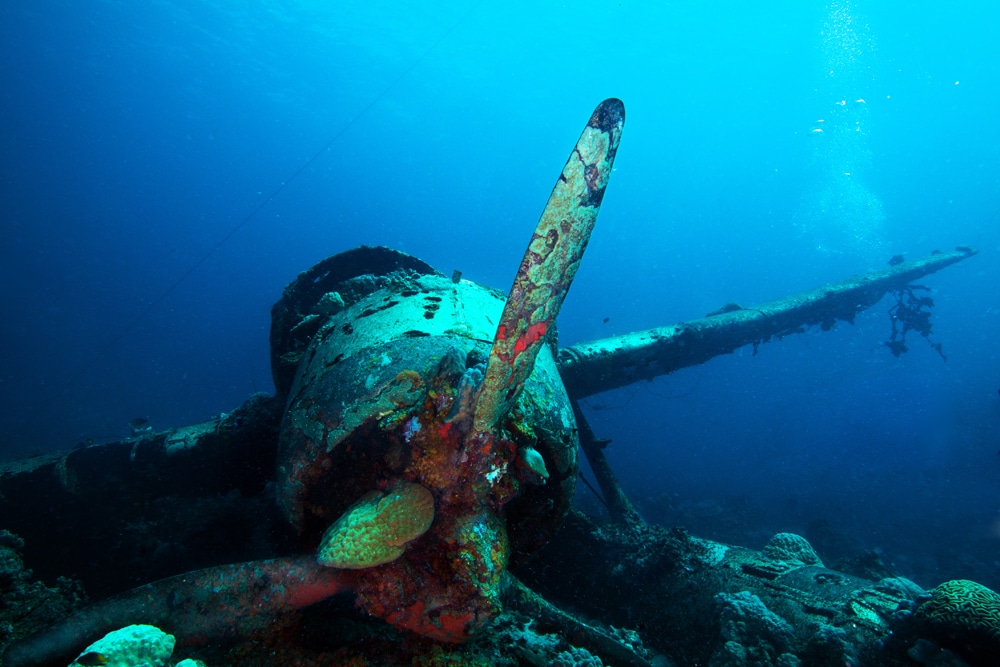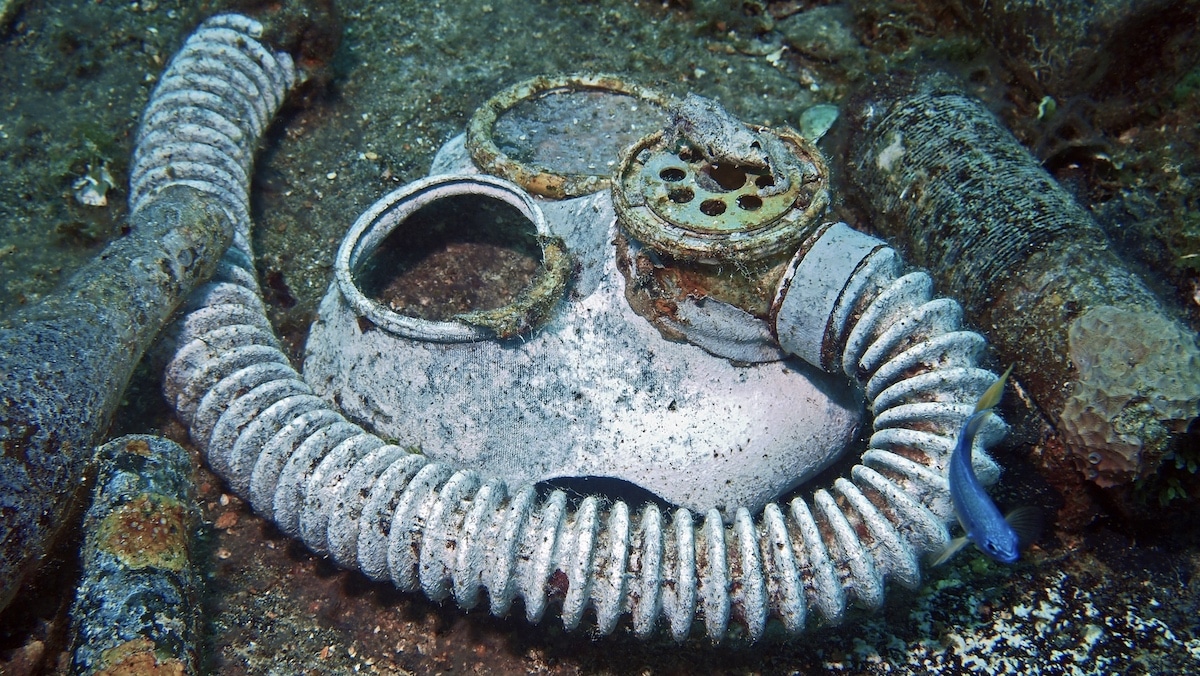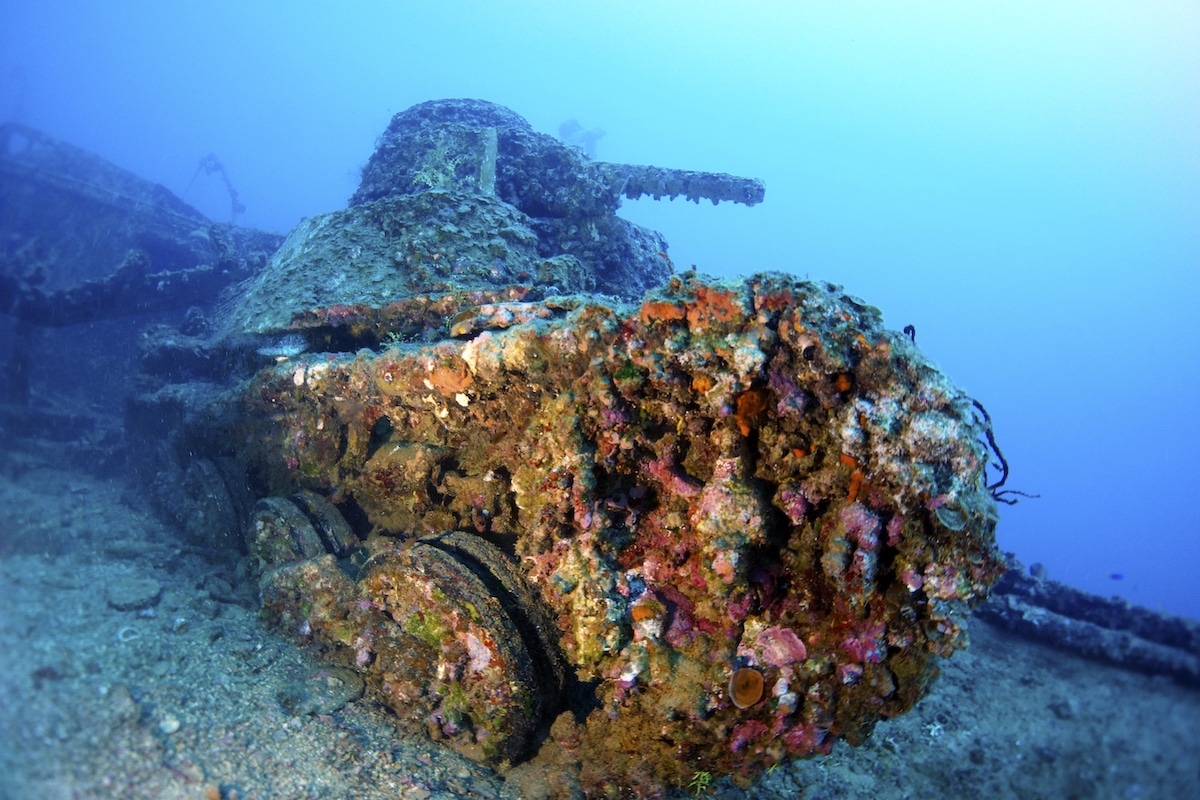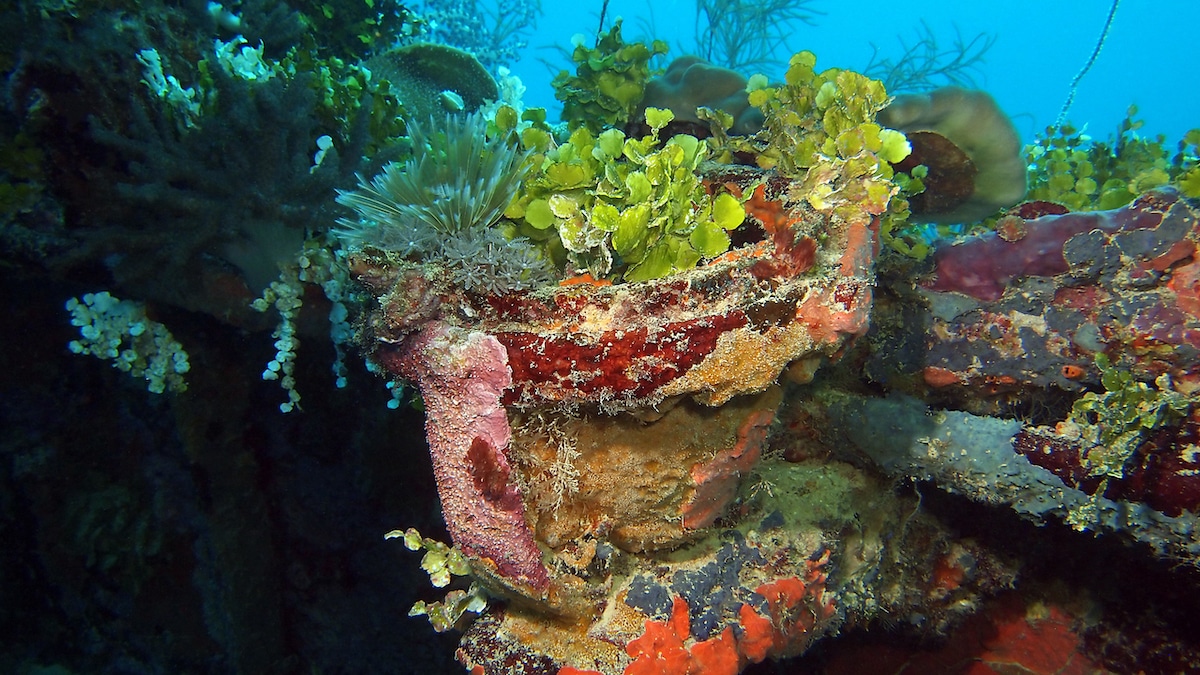News
Unmissable Micronesia Wrecks
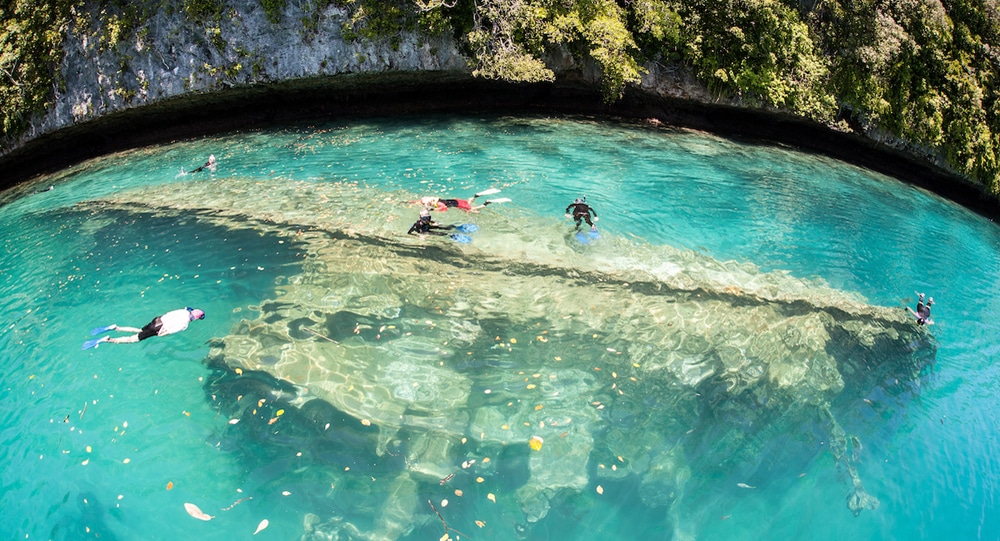
Micronesia scuba diving has everything a diver could wish for; from thriving reefs to coral-encrusted WWII wrecks, plenty of large marine life and tiny colourful critters. Palau and Truk Lagoon are the places to go if you’re a fan of wreck diving, with numerous wrecks on offer.
There are a variety of liveaboards to choose from at both destinations. The beautiful Palau Siren is an understandably popular choice with its luxurious accommodation. The SS Thorfinn is great for technical divers and has two special technical diving packages; the Rebreather Plan and Truk Tek Unlimited.
Truk lagoon can be dived all year, thanks to its sheltered nature, and Palau has three main diving seasons:
- The high season from December to March, offering flat seas and dry weather
- The shoulder months of April, July, August, October and November, when there is more wind and rainfall
- The low months of May, June and September which offer fewer visitors and the lowest prices
Here is our pick of the top Micronesia wrecks to explore:
PALAU
Palau is one of Micronesia’s main dive destinations and there is something for all interests; with reef dives, drop-offs, drift dives, caves and multiple wrecks to explore. It is best to visit Palau as an advanced diver, with drift and wreck diving experience, to make the most of the dive sites.
IRO MARU
What is it?
This Japanese Navy oiler sank in 1944 and is 143 meters long, with the deck at 25 meters below the surface.
Why dive this wreck?
The Iro Maru is an impressive sight, still sitting upright and giving a complete view of the ship. The deck is covered with clams, oysters and critters and the ship is home to plentiful corals, including black coral trees. There are numerous fish and an array of WWII artifacts, including some live ammunition – so be sure not to touch anything on the wreck. There are two large guns; one on the stern and the other on the bow.
Who is this wreck suitable for?
The Iro Maru sits in an area with no currents, making it easily accessible, and it is within recreational dive limits. Wreck penetration is possible at this wreck.
AMATSU MARU
What is it?
This oil tanker came into service just 4 months before being sunk. She is the largest shipwreck in Palau, with a total length of 159 meters.
Why dive this wreck?
This huge shipwreck is also known as the Black Coral Wreck, as the hull is covered in black coral trees. This unique sight is great for photography. The interior still has electrical and radio equipment and you can see damage on the stern from the explosions that sunk it.
Who is this wreck suitable for?
The Amatsu Maru lies at 40 meters depth, with the deck at 30 meters, and is best suited to advanced divers. Wreck penetration is possible.
JAKE SEAPLANE
What is it?
The Jake Seaplane is one of the most well-known wrecks and was only discovered in 1994, by a fisherman who spotted it from the surface. It is a WWII Navy Seaplane and is 11 meters long.
Why dive this wreck?
The Jake Seaplane sits upright on a coral head and is mostly intact. The wreck is covered in corals, and there are plenty of coral species to spot on the wreck and in the surrounding area.
Who is this wreck suitable for?
Sitting upright at around 15 meters depth, the Jake Seaplane is easily accessible and suitable for less experienced divers.
TRUK
Truk Lagoon is known for having more than 48 wreck diving sites and waters up to 100 meters deep. It is one of the best places for wreck diving and offers great opportunities for recreational and technical diving amongst World War II wrecks.
FUJIKAWA MARU
What is it?
This cargo and passenger ship had been sent to Truk lagoon for repairs in 1944 when it was caught up in Operation Hailstone and sunk after being hit by a torpedo. It is one of the most popular wreck dives in the area and she is 133 meters long.
Why dive this wreck?
This is another impressive wreck, with the boat sitting upright, and the outside of the wreck covered in corals and sponges. There is a large bow gun and two fighter aircrafts, and the engine room and tool rooms are a must. You can find many artefacts on this wreck, including artillery. Keep your eyes open for large schools of jacks and barracuda, plus grey reef sharks, whilst you dive there.
Who is this wreck suitable for?
The depth range of 5 to 35 meters, with the deck at 18 meters, makes the Fujikawa Maru ideal for all dive experience levels.
SANKISAN MARU
What is it?
This 112-meter Japanese army cargo ship was strafed, leading to a fire and explosions that ripped the ship apart. There is a huge 152-meter diameter crater with large metal sections lying around.
Why dive this wreck?
This is a great open wreck where you can see holds filled with machine gun and rifle shells, plus truck frames, aircraft engines and propellers. The aft is missing but the stern sits upright 100 meters away from the rest of the ship. The mast rising to the surface is covered in corals and there is also plenty of coral cover on the deck. It offers some of the best soft coral cover in the lagoon.
Who is this wreck suitable for?
The average depth is 24 meters, with a maximum depth of 27 meters, making this wreck suitable for advanced divers.
SAN FRANCISCO MARU
What is it?
This passenger cargo ship is Truk’s most famous deep dive, lying at a depth of around 63 meters.
Why dive this wreck?
The San Francisco Maru contains mines, bombs, tanks and trucks. She is a popular choice in the 40 to 60-meter (131 to 196 feet) depth range and the four cargo holds contain aircraft bombs, artillery shells, tanker trucks, a flatbed truck, and torpedo warheads.
Who is this wreck suitable for?
This wreck is a favourite among technical divers.
SHINKOKU MARU
What is it?
The Shinkoku Maru is around 152 meters long and was originally built as an oil tanker, later converted to a fleet oiler. She survived two days of attacks and two aerial torpedo strikes, until finally sinking.
Why dive this wreck?
This wreck is fantastic for night diving and has plentiful soft corals and hydroids that emerge after dark. This is one of the most colourful wrecks in Truk and truly comes alive at night. You can see into the engine room from the bridge and the galley still holds many utensils on the stove. The medical bay and huge engines are not to be missed.
Who is this wreck suitable for?
The depth range of 10 to 38 meters makes this wreck suitable for a variety of dive experience levels.
This article was written by divers and writers at LiveAboard.com
Photo Credits: SS Thorfinn Liveaboard
 Discover liveaboard diving holiday solutions around the world at Liveaboard.com.
Discover liveaboard diving holiday solutions around the world at Liveaboard.com.
News
Book Review: Fire on Monroe Bravo by Fred Lockwood

Fire on Monroe Bravo is the latest book in the Jack Collier series by Fred Lockwood. Our story begins with our lead characters, Jack and Sandro, owners of Marine Salvage & Investigation Company, arriving on the Monroe Bravo Oil & Gas Platform in the North Sea. Having secured a contract for their vessel the MV Stavanger to act as support ship to the platform for TransGlobal Oil, our protagonists are on a celebratory visit.
However almost as soon as they arrive a series of explosions rock the platform, causing huge damage, loss of life and the very real danger of a massive human, ecological and financial disaster.

As the danger mounts for both our heroes and the surviving workers, Jack and Sandro will have to escape the inferno, all while trying to save the platform and the men still trapped unable to help themselves.
The disaster sets the scene for the unfolding story lines following the fate of the platform and our main characters, the police investigation into a suspected terrorist act and the actions of TransGlobal Oil as they attempt to navigate the pubic outcry and financial repercussions.
In his eighth book, Fire on Monroe Bravo, Fred Lockwood delivers an explosive thriller, with plenty of above and in-water drama, and our heroes fighting for survival, what more can you ask for?
We thoroughly recommend this read and look forward to the next in the series. For more information about his book series, you can check out the reviews of his previous books here on Scubaverse.
- Title: Fire On Monroe Bravo
- Author: Fred Lockwood
- ISBN: 979-8325324536
Available in a paperback version and for Kindle from Amazon and book stores.
Blogs
Alonissos: The complete diving destination (Part 1)

In June we were incredibly fortunate to be invited to dive in Alonissos, a small Greek Island in the Sporades island chain located in the North Aegean Sea. While I have long been a big fan of the Greek Islands as a great holiday destination, I had not had the opportunity to do any diving on previous visits and Mike and I were extremely excited to see what Alonissos had to offer both above and below the surface!

The Sporades are easily accessible via the airport in Skiathos (the first island in the chain), which is served by Jet2 flights from all major UK airports from May through October. Numerous ferries and charter boats make island hopping from Skiathos Town a breeze. After an hour boat ride, the picturesque port of Patitiri was a wonderful introduction to Alonissos, where we were met by our gracious hosts Kostas of Albedo Travel and Dias of Alonissos Triton Dive Center. Mike and I were delighted to be staying at the Paradise Hotel, aptly named for its stunning views over the sea and great location for walking to the waterfront.

Alonissos is beautifully situated in the National Marine Park of Alonissos and the Northern Sporades, the largest marine protected area in Europe. The surrounding seas offer fabulous marine life, including incredibly rare species such as the Mediterranean monk seal. They boast deep walls covered in gorgonians and sponges, stunning topography with caverns, swimthroughs and pinnacles, and the first accessible ancient shipwreck from 500BC!

In locations where historical sites have been reported, the waters are largely restricted, but with collaboration between government, underwater archeologists and dive centres, incredible underwater museums are being created for a truly unique diving experience. Alonissos is home to the first of these, the Ancient Shipwreck of Peristera Accessible Underwater Archeological Site. The chance to dive into history (along with reports of healthy reef life and amazing underwater topography) meant Mike and I were keen to get in the water.

Our introduction to the diving around Alonissos was at the Agios Georgios Pinnacles, in the channel between Alonissos and Skopelos. This fantastic site was named “The Chimney,’ and proved to have a huge amount to see. We got to a decent depth here (over 25m), and marvelled at a colourful reef wall with a wonderful swim through whose rocky walls were absolutely covered with life. As well as brilliant topography there was no shortage of macro life here. We saw numerous nudibranchs, five different species in total. The second dive at Mourtias reef nearby was a shallower dive along a nice wall with lots of crevices. Several moray eels and grouper called this site home. We enjoyed looking in the crevices for lobster and smaller benthic life, such as cup corals and tunicates.

Our itinerary allowed us two dives a day with afternoons left to explore the island with our hire car and evenings to enjoy the famous Greek hospitality. This proved to be a lovely mix of in-water and land based diversions.

The next days diving to the Gorgonian Gardens and Triton’s Cave was to be even better! These two stunning sites are nothing short of fabulous. The Gorgonian Gardens was a deep wall near to the Agios Georgios islands. The ever-present currents in this deep channel meant that the sea life was amazing … the namesake Gorgonian sea fans dotted the wall at a depth of 30 to 50 meters, getting ever larger the deeper we went. Above 30m was by no means less beautiful, with sponges, corals, scorpionfish, moray eels and some rare and colourful nudibranchs.

The second shallower dive of the day was to Triton’s Cave or the Cavern of Skopelos, on the east side of that island. The spectacular rock formations had wild striations both above and below the water making a truly epic topography. The cavern entrance was at 14m, and big enough for a buddy pair, winding up to 6m and passing two beautiful windows out into the blue. Emerging from the cavern, the light at the shallower depths and the incredible rock formations made for a fantastic gentle swimming safety stop and we all surfaced by the boat with massive grins.

Check out our next blog :Alonissos: The complete diving destination (Part 2)” to hear about our amazing dive on the 2500 year old Peristera Wreck!
Thanks to:
Alonissos Triton Dive Center https://bestdivingingreece.com/
Albedo Travel https://alonissosholidays.com/activities/
Paradise Hotel https://paradise-hotel.gr/
Alonissos Municipality https://alonissos.gr/en/
-

 Blogs2 months ago
Blogs2 months agoDiving With… Nico, Ocean Earth Travels, Indonesia
-

 News1 month ago
News1 month agoMurex Bangka Announce New Oceanfront Cottages & Beachfront Dining
-

 Blogs2 months ago
Blogs2 months agoA new idea in freediving from RAID
-

 Marine Life & Conservation1 month ago
Marine Life & Conservation1 month agoIceland issue millionaire whale hunter a licence to murder 128 vulnerable fin whales
-

 Marine Life & Conservation2 months ago
Marine Life & Conservation2 months agoThe Shark Trust Great Shark Snapshot is back
-

 News3 months ago
News3 months agoCharting New Waters; NovoScuba Goes Global with the Launch of their Revolutionary Dive Training Agency!
-

 Gear News1 month ago
Gear News1 month agoNew Suunto Ocean – a dive computer and GPS sports watch in one for adventures below and above the surface
-

 Marine Life & Conservation Blogs2 months ago
Marine Life & Conservation Blogs2 months agoBook Review: Plankton


